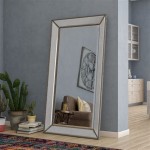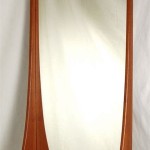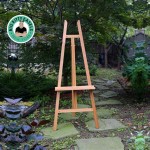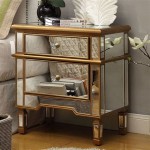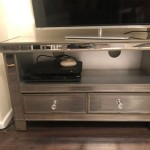Can You Hang A Mirror With Double-Sided Tape On The Wall?
The question of whether double-sided tape can effectively and safely hang a mirror on a wall is a common one, especially considering the appeal of avoiding nails, screws, or drilling. While the answer isn't a simple yes or no, it hinges on several key factors including the type of tape, the weight and size of the mirror, the wall surface, and the proper application technique. This article will explore these factors in detail, providing a comprehensive understanding of the potential success and limitations of using double-sided tape for mirror hanging.
The allure of using double-sided tape lies in its ease of use and the lack of permanent alteration to the wall. Drilling holes can be daunting for some, and the prospect of patching and painting after removal adds to the resistance. Double-sided tape promises a clean, simple solution, but its suitability depends on a meticulous assessment of the specific circumstances.
Understanding the Types of Double-Sided Tape
Not all double-sided tapes are created equal. The market offers a wide range of adhesives, each designed for specific applications and load-bearing capacities. Using the wrong type of tape can lead to mirror failure, potentially causing damage to the mirror itself, the wall, or even personal injury. Therefore, it is crucial to differentiate between different types of double-sided tape and choose the appropriate one for the job.
Standard double-sided tape, often found in stationery stores, is generally not suitable for hanging mirrors. These tapes are typically designed for light-duty tasks like sticking paper or wrapping gifts. They lack the necessary adhesive strength and shear strength to support the weight of a mirror over an extended period. Using this type of tape is almost certain to result in the mirror falling.
Construction-grade double-sided tape represents a significant upgrade in adhesive strength. These tapes are specifically engineered for bonding materials like wood, metal, and plastic in construction applications. They often feature a thicker adhesive layer and a stronger carrier material, providing enhanced holding power. While potentially suitable for smaller, lighter mirrors, it's still essential to verify the weight rating of the tape and ensure it adequately supports the mirror's weight with a significant safety margin.
Heavy-duty mounting tape, often marketed as "mirror mounting tape," is the preferred choice for hanging mirrors with double-sided tape. These tapes are formulated with acrylic or rubber-based adhesives that offer exceptional bonding strength and resistance to shear forces. They are designed to withstand the weight of mirrors and other heavy objects, and they often come with specific weight recommendations per square inch or centimeter. Always refer to the manufacturer's specifications to determine the tape's load-bearing capacity and ensure it is sufficient for the mirror in question.
Another consideration is the tape's resistance to moisture and temperature fluctuations. Bathrooms and kitchens, where mirrors are frequently hung, often experience high humidity and temperature variations. Tapes that are not resistant to these conditions may lose their adhesive properties over time, leading to failure. Look for tapes specifically labeled as moisture-resistant or suitable for use in humid environments.
Assessing the Mirror's Weight, Size, and Wall Surface
The weight and size of the mirror are critical factors in determining the suitability of double-sided tape. A small, lightweight mirror is far more likely to be successfully hung with tape than a large, heavy one. The weight of the mirror directly impacts the amount of adhesive force required to keep it securely in place. The larger the mirror, the greater the surface area exposed to gravity's pull, increasing the strain on the adhesive bond.
Before even considering double-sided tape, accurately weigh the mirror. Do not rely on estimations. Using a bathroom scale or a postal scale will provide an accurate measurement. Once you know the weight, you can compare it to the weight rating of your chosen tape. It's crucial to choose a tape that can support the mirror's weight with a considerable margin of safety. A general rule of thumb is to select a tape that can hold at least twice the mirror's weight to account for potential variations in application and environmental conditions.
The wall surface also plays a crucial role in the success of using double-sided tape. Smooth, non-porous surfaces like glass, ceramic tile, and metal provide the best adhesion. These surfaces allow the tape to create a strong, intimate bond. Rough or porous surfaces, such as textured drywall, wallpaper, or painted plaster, can significantly reduce the tape's adhesive strength. The texture prevents the tape from making full contact with the surface, while the porosity allows the adhesive to seep into the material, weakening the bond.
If you plan to hang a mirror on a painted surface, ensure the paint is fully cured and in good condition. Loose or peeling paint will compromise the tape's adhesion. It may be necessary to lightly sand the area where the tape will be applied to create a smoother surface and improve adhesion. However, be cautious not to damage the underlying wall structure.
For porous surfaces like drywall, consider using a primer or sealant to create a more stable and adhesive-friendly base. Applying a thin coat of primer to the area where the tape will be applied can help to seal the pores and provide a smoother surface for the tape to adhere to. Allow the primer to dry completely before applying the tape. In some cases, it might be necessary to reinforce the existing drywall or even consider alternative hanging methods.
Proper Application and Preparation Techniques
Even with the right type of tape and a suitable wall surface, improper application can lead to failure. Thorough preparation and meticulous application are essential for ensuring a secure and long-lasting bond. Taking the time to follow these steps carefully will significantly increase the chances of success.
Begin by thoroughly cleaning both the mirror's surface and the wall surface where the tape will be applied. Use a clean, lint-free cloth and a degreasing cleaner, such as isopropyl alcohol, to remove any dirt, dust, grease, or other contaminants. These contaminants can interfere with the tape's ability to bond properly. Allow both surfaces to dry completely before proceeding. Ensure the cleaner used does not leave any residue that could interfere with adhesion.
Cut the tape into strips or squares of appropriate length and size. The amount of tape required will depend on the size and weight of the mirror. As a general guideline, use more tape than you think you need, especially for heavier mirrors. Consider applying tape around the entire perimeter of the mirror, as well as in a grid pattern across the back. This will distribute the weight evenly and provide maximum holding power. Leaving small gaps between the tape strips can aid in air circulation and prevent moisture buildup behind the mirror.
Carefully apply the tape to the back of the mirror, pressing firmly to ensure a strong initial bond. Use a roller or a hard, flat object to apply even pressure across the entire surface of the tape. This will help to eliminate air bubbles and ensure maximum contact between the tape and the mirror surface. Avoid touching the adhesive surface of the tape with your fingers, as this can transfer oils and reduce its adhesive strength.
Before mounting the mirror on the wall, consider marking the desired location with a pencil. This will help you to accurately position the mirror and avoid making adjustments after it has been applied. Once you are satisfied with the placement, carefully peel off the backing from the tape strips, exposing the adhesive. Align the mirror with your markings and press it firmly against the wall, applying even pressure across the entire surface. Hold the mirror in place for several minutes to allow the adhesive to bond to the wall surface. This is crucial for establishing a strong initial bond.
After mounting the mirror, it's advisable to provide additional support for the first 24-48 hours while the adhesive fully cures. This can be achieved using painter's tape or temporary supports. Painter's tape can be applied around the perimeter of the mirror to hold it in place and prevent it from sliding down. Alternatively, you can use shims or wedges to support the bottom of the mirror. This extra support will ensure that the adhesive has ample time to develop a strong, permanent bond.
Regularly inspect the mirror and the tape for any signs of loosening or failure. If you notice any issues, such as the mirror starting to sag or the tape peeling away from the wall, take immediate action to prevent the mirror from falling. This might involve adding more tape, reinforcing the existing tape, or ultimately choosing a different hanging method.

3 Simple Ways To Hang A Mirror On Wall Without Nails Wikihow

3 Simple Ways To Hang A Mirror On Wall Without Nails Wikihow

Tesa Powerbond Mirror 5m X 19mm Adhesive Solutions

How To Remove Hard Reach Double Sided Tape From The Wall Without Damage

3 Simple Ways To Hang A Mirror On Wall Without Nails Wikihow

Adhesive Double Sided Mirror Tape Tesa

Tesa Powerbond 55733 Double Sided Tape For Mirrors Kalogiannis

How To Hang A Large Wall Mirror Step By Tutorial

How To Hang A Large Or Heavy Mirror

Double Sided Tape To Hang Mirror Best


